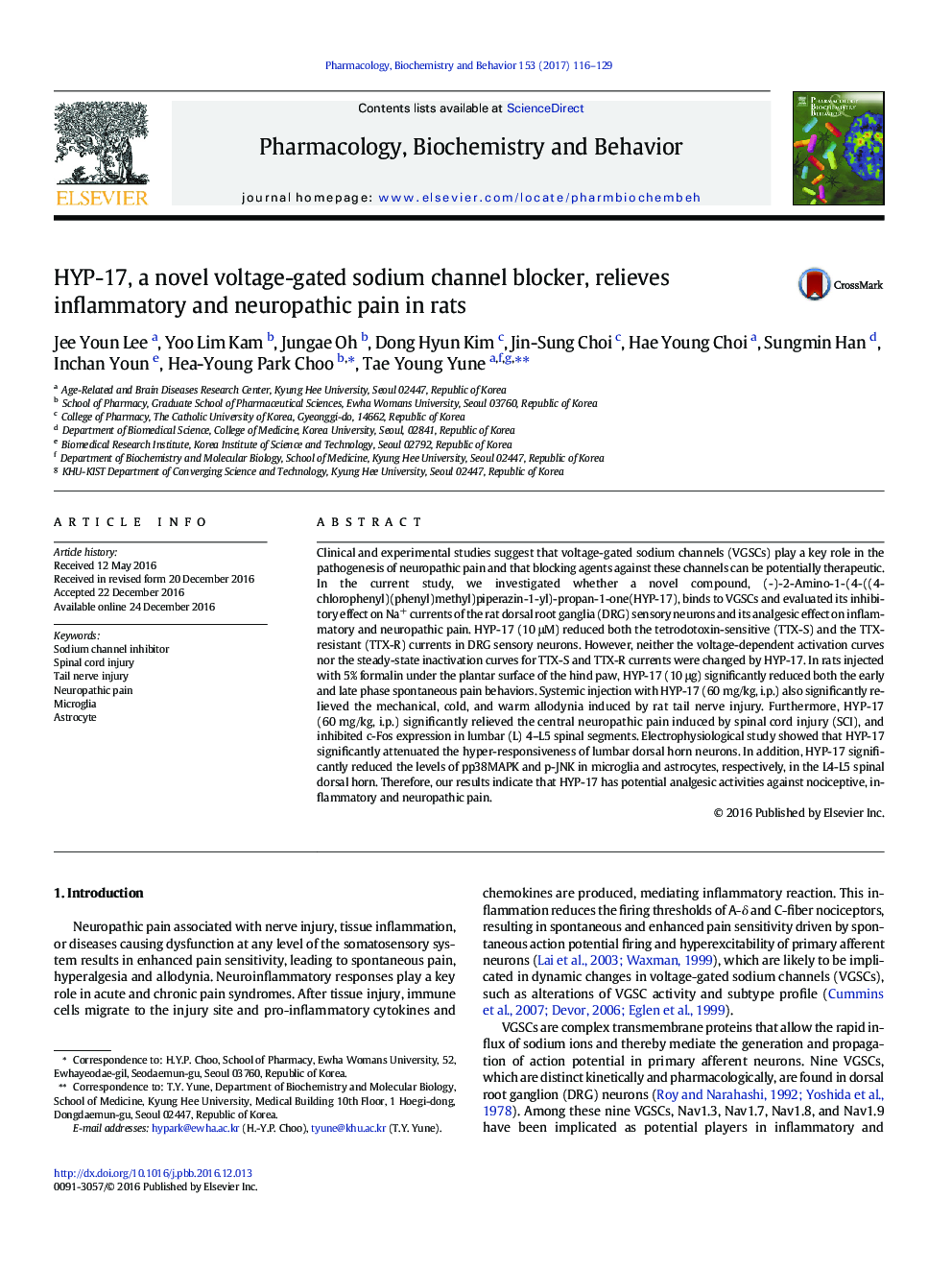| Article ID | Journal | Published Year | Pages | File Type |
|---|---|---|---|---|
| 5515224 | Pharmacology Biochemistry and Behavior | 2017 | 14 Pages |
â¢HYP-17 blocks TTX-sensitive and resistant current in adult rat DRG neurons.â¢HYP-17 relieves formalin-induced inflammatory pain.â¢HYP-17 relieves neuropathic pain induced by peripheral tail nerve injury.â¢HYP-17 relieves SCI-induced CNS neuropathic pain.â¢HYP-17 inhibits microglial activation in spinal cord dorsal horn after SCI.
Clinical and experimental studies suggest that voltage-gated sodium channels (VGSCs) play a key role in the pathogenesis of neuropathic pain and that blocking agents against these channels can be potentially therapeutic. In the current study, we investigated whether a novel compound, (-)-2-Amino-1-(4-((4-chlorophenyl)(phenyl)methyl)piperazin-1-yl)-propan-1-one(HYP-17), binds to VGSCs and evaluated its inhibitory effect on Na+ currents of the rat dorsal root ganglia (DRG) sensory neurons and its analgesic effect on inflammatory and neuropathic pain. HYP-17 (10 μM) reduced both the tetrodotoxin-sensitive (TTX-S) and the TTX-resistant (TTX-R) currents in DRG sensory neurons. However, neither the voltage-dependent activation curves nor the steady-state inactivation curves for TTX-S and TTX-R currents were changed by HYP-17. In rats injected with 5% formalin under the plantar surface of the hind paw, HYP-17 (10 μg) significantly reduced both the early and late phase spontaneous pain behaviors. Systemic injection with HYP-17 (60 mg/kg, i.p.) also significantly relieved the mechanical, cold, and warm allodynia induced by rat tail nerve injury. Furthermore, HYP-17 (60 mg/kg, i.p.) significantly relieved the central neuropathic pain induced by spinal cord injury (SCI), and inhibited c-Fos expression in lumbar (L) 4-L5 spinal segments. Electrophysiological study showed that HYP-17 significantly attenuated the hyper-responsiveness of lumbar dorsal horn neurons. In addition, HYP-17 significantly reduced the levels of pp38MAPK and p-JNK in microglia and astrocytes, respectively, in the L4-L5 spinal dorsal horn. Therefore, our results indicate that HYP-17 has potential analgesic activities against nociceptive, inflammatory and neuropathic pain.
